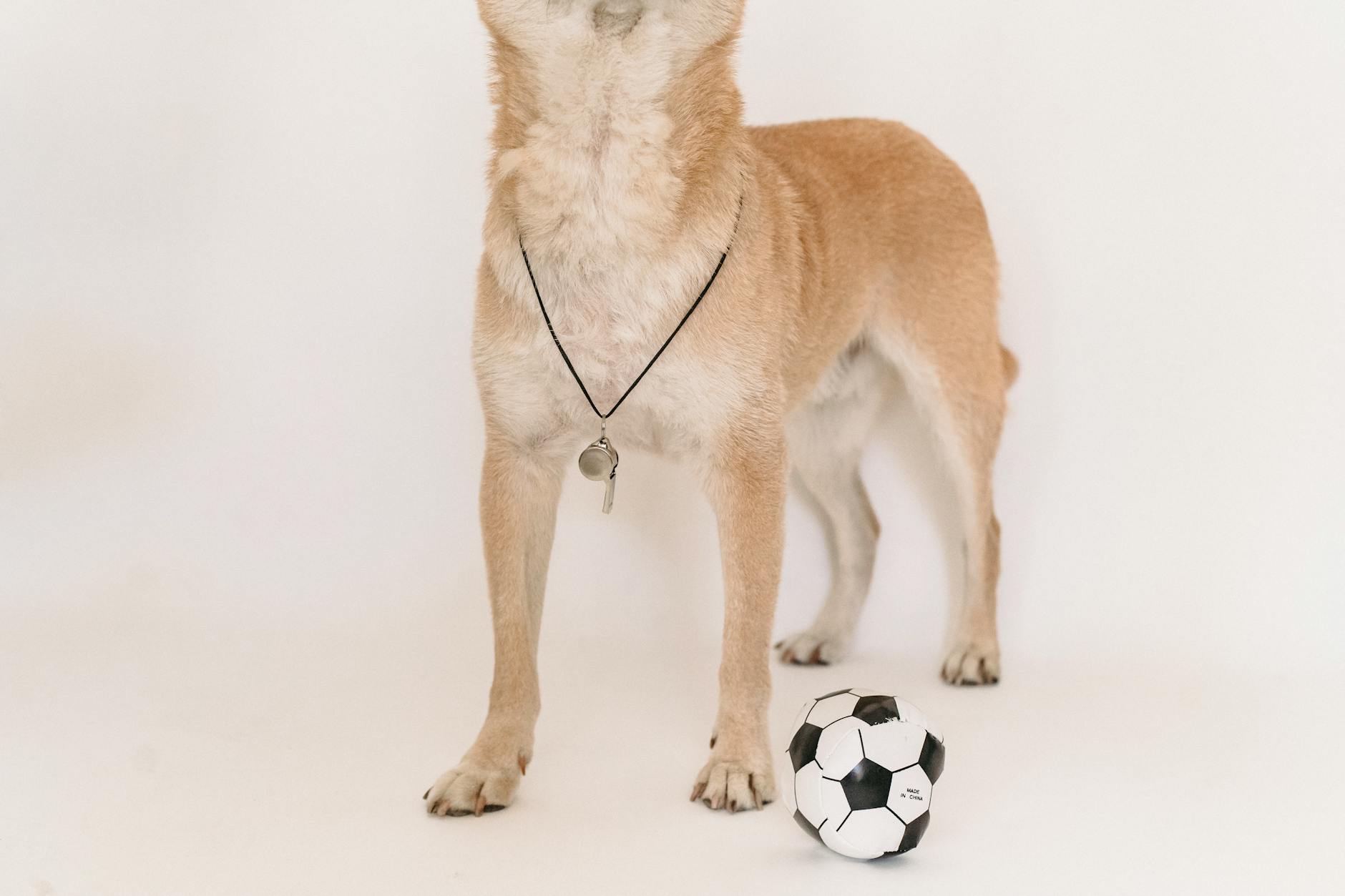Are Green Dog Training Technologies the Future for Australia’s Eco-Savvy Pet Owners?

Exploring Green Dog Tech
Navigating the landscape of eco-friendly dog training tools offers a chance to embrace sustainable living while improving pet care. In Brisbane, initiatives like eco-projects at the Brisbane River highlight the importance of sustainable practices. One technological advance that aligns with these values is the use of anti bark collars. These devices are designed to correct excessive barking by using less intrusive methods compared to traditional training tools, offering a humane approach that resonates with today's environmentally-conscious mindsets.
Eco-Friendly Training Tools
Modern pet care has witnessed a surge in the development of green tech innovations tailored to pet training. Among these, the snuggle puppy provides a comforting alternative for puppies with separation anxiety, using a heat pack and heartbeat feature to simulate companionship. Such tools not only foster a nurturing environment for dogs but also reduce the reliance on synthetic materials and chemicals harmful to our surroundings.
Popular Technologies Today
Investing in tech-savvy pet care solutions is not only about ease but also about integrating sustainability into our daily routines. One particularly impressive technology is GPS dog tracking. This device not only ensures the safety of your furry friend by providing real-time location updates but also reduces the need for paper-based dog-location methods. This reduction in resource usage mirrors efforts seen in local conservation projects like those at the Lone Pine Koala Sanctuary, where the focus is on minimising environmental impact.
Environmental Benefits
Implementing these advanced technologies goes beyond simply enhancing pet care. Every tool and technique contributes to a larger picture of sustainable living. By selecting eco-conscious products and methods, we collectively aim to decrease the carbon footprint associated with pet care, much like the urban wildlife studies being conducted in D'Aguilar National Park, which focuses on maintaining the delicate balance of natural ecosystems. These actions reflect the harmonious blend of innovation with responsibility—crucial elements in the effort to preserve our shared environment.
Implementing Technology in Training
Integration in Everyday Training
As a veterinary technician, you might appreciate how the natural landscapes around the Brisbane River inspire us to incorporate eco-friendly practices into our daily routines. Integrating technology into dog training can be seamless and beneficial. For instance, a hidden dog fence is a great innovation for setting boundaries without the use of a physical barrier, giving dogs the freedom to roam safely within designated areas. This technology aids guardians in maintaining a harmonious balance between harnessed freedom and safety for pets, enhancing their overall well-being.
Leveraging GPS Systems
GPS systems are a fantastic solution for pet safety, combining the art of tech and care. These systems provide real-time location tracking, ensuring pet owners can monitor their dogs effectively. Such devices not only prevent potential escapes but also contribute towards a more relaxed, carefree environment for both pets and their humans. In conjunction with initiatives like the urban wildlife studies in D'Aguilar National Park, these tech solutions highlight a commitment to merging safety with innovation.
Effective Use of Citronella Collars
In training, understanding the use of citronella collar offers a humane and eco-friendly alternative for behavioural management in dogs. Unlike traditional shock collars, these spray a harmless yet effective citronella mist when the dog barks, encouraging quieter behaviour without causing distress. Integrating such a tool into regular training can foster a peaceful environment, both at home and in public settings. By adopting these technologies, pet owners can take proactive steps toward enhancing their pets' lives while keeping sustainability in mind.
Addressing Owner Concerns
Overcoming Skepticism
Navigating scepticism around new pet technologies requires an empathetic approach. It's essential to connect with pet owners who are hesitant about integrating innovations like training collars dogs. For instance, drawing parallels with local eco-projects at the Brisbane River, these collars are designed with environmentally friendly materials, emphasising the community’s commitment to sustainability.
Demonstrating Tangible Benefits
Technology must demonstrate clear benefits to pet owners who may be sceptical. Perhaps you're considering dog travel accessories, designed to improve safety and comfort. Highlighting tangible outcomes, such as enhanced pet security during trips or reduced environmental impact through sustainable materials, can help bridge understanding. Statistics or case studies that show reduced behavioural issues with proper usage can also be impactful.
Simplifying User Experience
Simplifying the user experience is key for encouraging adoption among pet owners unfamiliar with advanced tools. This might involve developing intuitive interfaces or integrating smart technology akin to devices used in wildlife studies at D'Aguilar National Park. Such features allow for seamless operation and improved results. Offering workshops or demonstrations can further aid in educating users, eliminating the intimidation factor that often arises with new technology.
Addressing owner concerns through clear explanations, empathetic connection, and straightforward guidance can lead to greater acceptance of pet technology innovations.
Best Practices for Adoption
Choosing Suitable Technologies
When considering eco-friendly pet training tools, it's essential to select technologies that align with both environmental values and effectiveness. The choice between a citronella dog collar and a shock collar, for instance, depends primarily on your pet's needs and sensitivity. Citronella collars are often favoured due to their plant-based deterrent, which is a humane alternative to shock collars and aligns with green practices. These collars release a burst of citronella spray when activated by your dog's bark, a method considered to be less invasive.
Educating Pet Owners
Educating pet owners about the benefits and potential drawbacks of using these technologies is crucial. A key piece of advice is to understand how these devices work and their impact on a pet's behaviour. Regular workshops or informational sessions could be organised, taking inspiration from the conservation efforts seen at places like the Lone Pine Koala Sanctuary. These sessions should focus on demonstrating the humane aspects of citronella collars while guiding owners toward more sustainable choices.
Encouraging Gradual Implementation
Gradual implementation of new technologies can be less overwhelming for both the pet and its owner. Start with observation; monitor how your pet reacts to new devices. Implement changes one at a time, evaluating each tool's impact and tweaking your approach as needed. This thoughtful integration not only benefits the animals but also ensures that the surrounding environment is respected, as seen in urban wildlife studies in areas like D'Aguilar National Park.
Common Mistakes
Misuse of Technological Tools
One common mistake pet owners make is misusing training technologies, such as anti-bark collars, without a proper understanding of how they work. In Brisbane, we're surrounded by inspiring conservation efforts like those at the Lone Pine Koala Sanctuary, reminding us of the importance of responsible technology usage. Often, these gadgets are misapplied, leading to stress or discomfort for pets. Understanding the best dog collars for behaviour involves assessing their compatibility with the individual needs of your dog and ensuring their use aligns with positive reinforcement techniques.
Ignoring Environmental Impact
As eco-conscious professionals, ignoring the environmental impact of pet technologies is an oversight we can't afford. Embracing innovations alongside the Brisbane River's eco-projects can guide us in seeking sustainable solutions. Opt for training tools with minimal ecological footprints, prioritising rechargeable batteries and eco-friendly materials. This reduces waste and aligns with green values, just as urban wildlife studies in D'Aguilar National Park promote a harmonious coexistence with nature.
Neglecting Dog Behavior Signals
Neglecting a dog's behavioural cues is another common pitfall when employing technological tools. Observing your pet's reactions and adjusting training methods accordingly is crucial. Think of it as an urban wildlife study—every wag or whine provides data to understand better the needs of your companion. Aligning technology use with traditional approaches ensures your dog feels secure and happy, just like preserving natural habitats fosters harmony. By being mindful of these aspects, we can nurture a more sustainable and compassionate approach to pet training.


